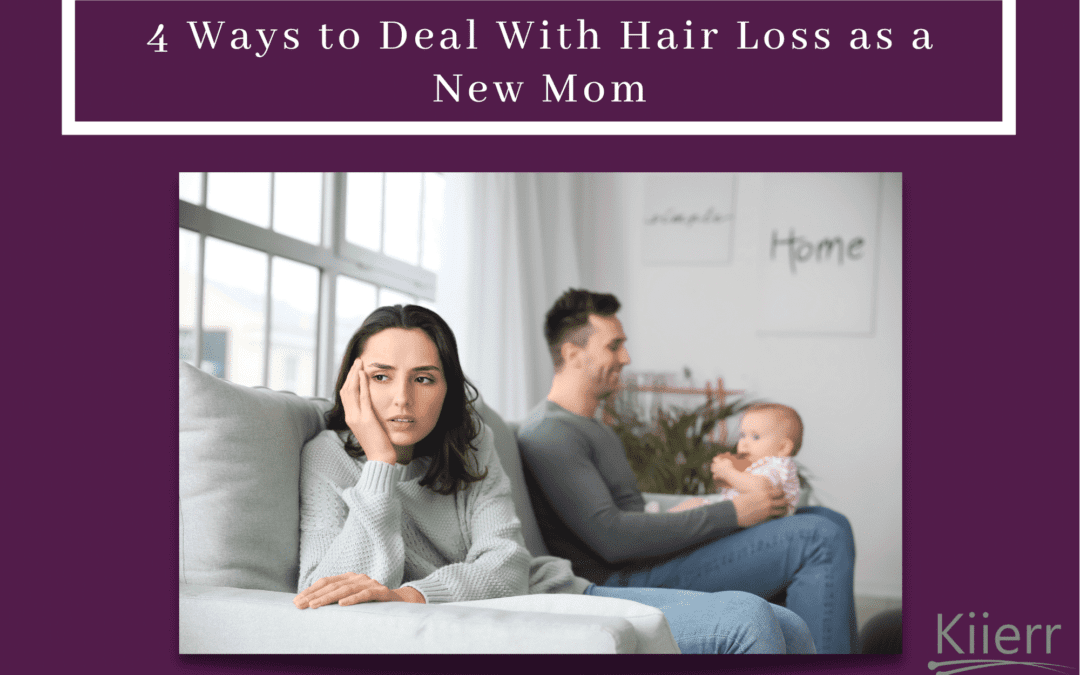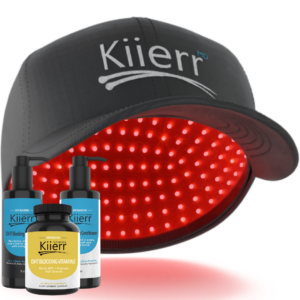Giving birth to a new baby is an exciting moment, but it also puts your body through a lot. And in the days and weeks after delivering your newborn, don’t be surprised if you notice excessive hair shedding. Postpartum hair loss is something millions of new mothers face. Knowing how to deal with it properly may allow you to address the issue more effectively.
What is Postpartum Hair Loss?
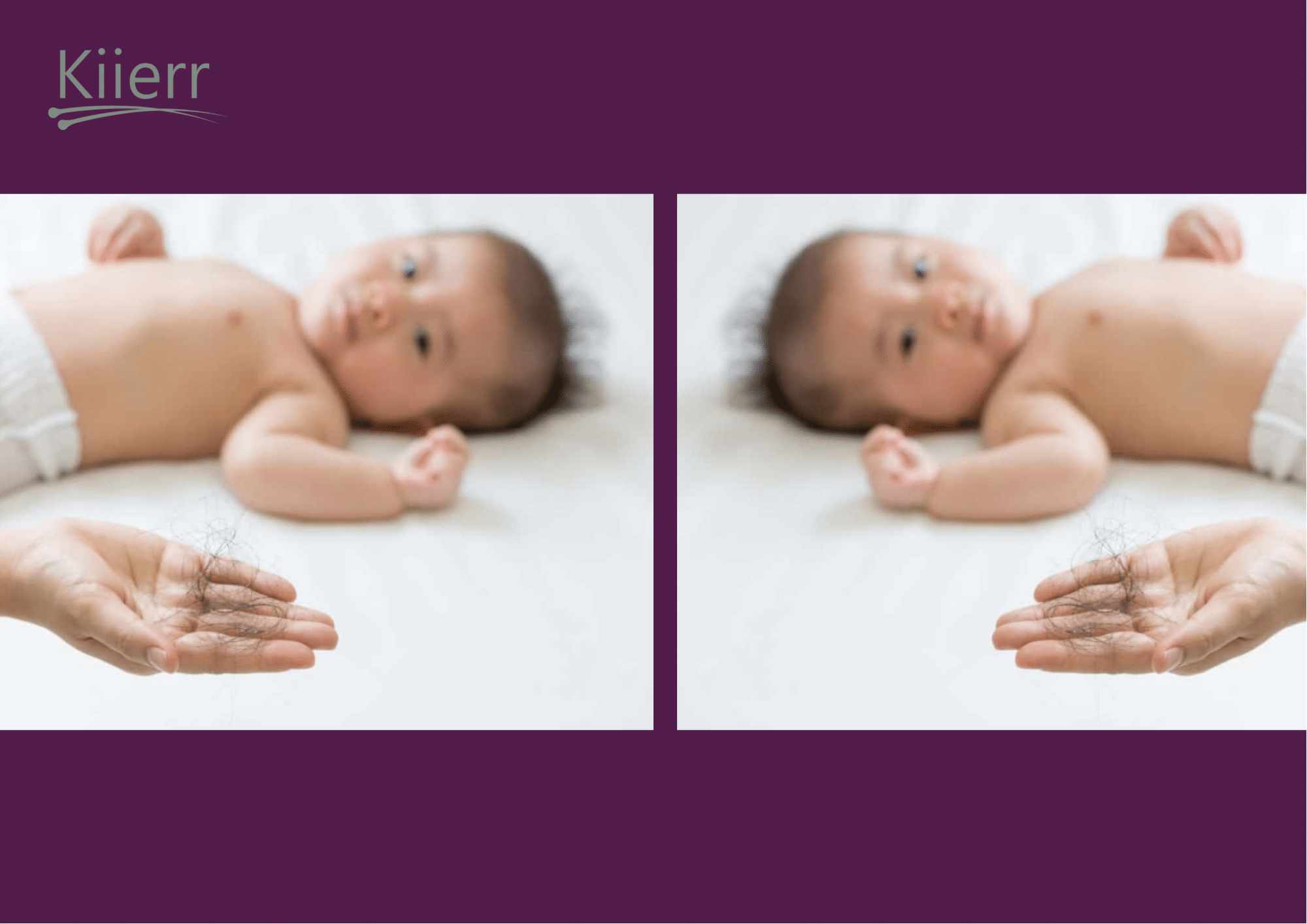
During pregnancy, many women are excited to find their hair healthier than ever. Except for some minor dryness (which can be addressed with some deep conditioning), most pregnant women enjoy thick, lush hair. But just when they’re starting to get used to their “new” hair, it vanishes as quickly as it came. Not only does hair return to its pre-pregnancy state, but in many cases, it actually falls out. What gives?
In order to understand what’s happening, it’s first important to understand how hair growth works. Hair starts in the anagen phase (where hair grows), transitions to the catagen phase (where hair growth stops and hair becomes detached from the blood supply), shifts to the telogen phase (where hair falls out), and then returns to the anagen phase where starts the process over.
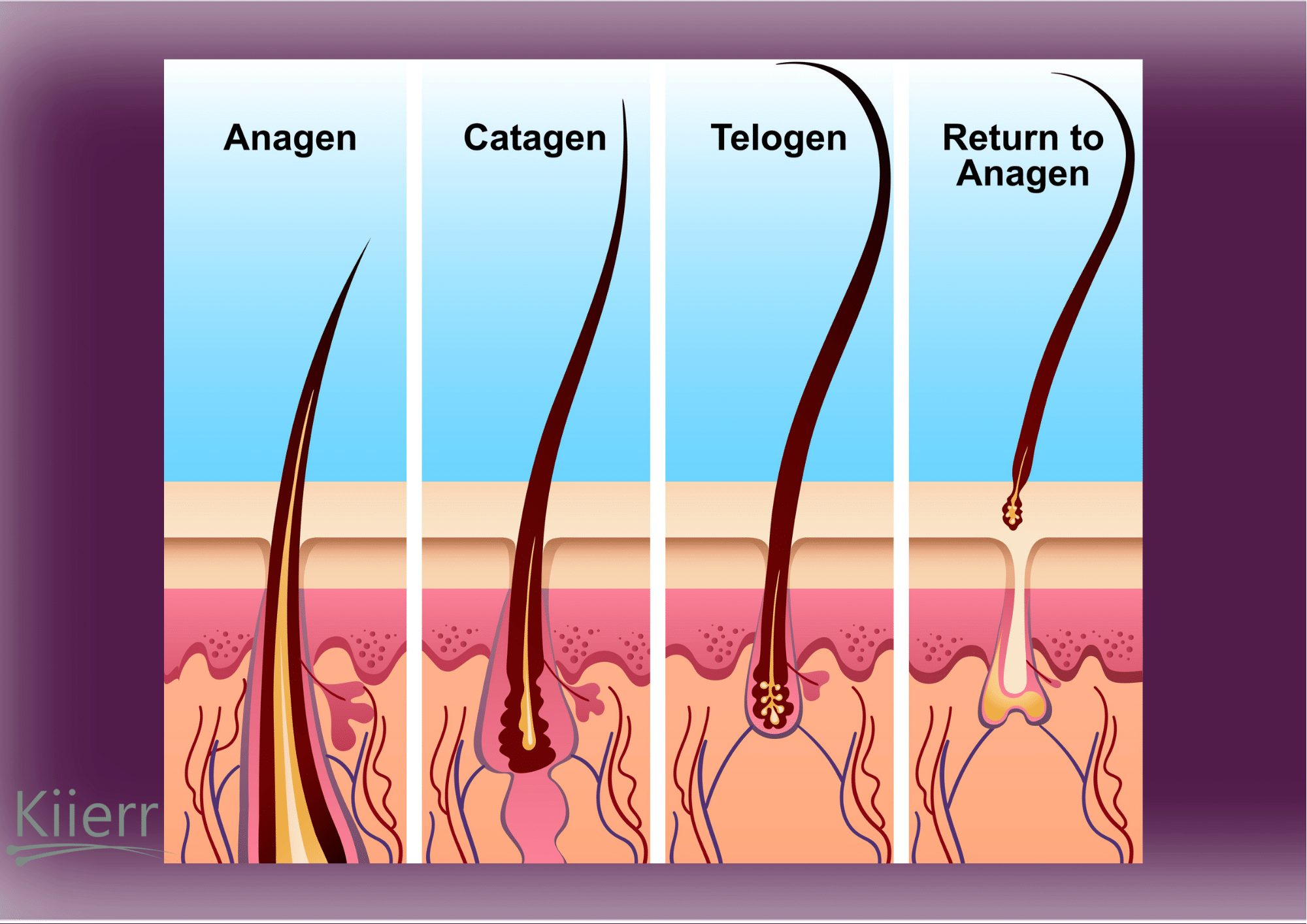
The average person loses somewhere between 50 and 100 hairs per day. But because the human scalp contains well over 100,000 hairs, This hair loss isn’t noticeable. New hair is constantly emerging to replace the lost hair, which prevents thinning or balding from occurring.
During pregnancy, everything changes. There are massive hormonal shifts in the body, which alter the entire hair growth cycle. Certain hormones kick production into high gear in order to account for the tough work of growing a baby. Other hormones level out. This knocks everything out of alignment.
At first, this “misalignment” has positive effects. During pregnancy, hormonal shifts actually promote hair growth. They prevent you from shedding at a normal rate. So instead of losing 50 to 100 hairs per day, you might only lose a few 25 to 50. At the same time, your hair is continuing to grow and replenish. The result is thicker, fuller hair.
While most women welcome an increase in hair growth, it doesn’t last long. After pregnancy, all of those hormones that flooded into the body suddenly flow right back out. There’s a rapid drop in levels – particularly estrogen – which triggers hair loss to resume. But instead of normal hair loss, the body responds by kicking things into high gear.
Consider that, for several months, your body hasn’t been shedding at a normal rate. On top of that, your hair has been growing. With elevated hormone levels no longer present, your body decides it’s time for all of this excess hair to fall out. The result is a phenomenon known as telogen effluvium.
With telogen effluvium, a larger amount of hair than normal is suddenly triggered and told to enter the resting and shedding phases. But here’s the tricky part: It usually takes around 90 days for hair to fall out. So rather than notice hair loss immediately after the new baby arrives, most moms experience increased shedding around the three or four-month mark.
The good news is that postpartum hair loss is only temporary. While every situation is different, most women will eventually return to their normal pre-pregnancy state. The typical “recovery time” is somewhere between three to six months. In extreme cases, it can take up to a year to regrow hair completely.
4 Ways to Address Postpartum Hair Loss
While you can’t do much to control the sudden recalibration of hormones after pregnancy, there are proactive steps you can take to address postpartum hair loss and hasten your return to normalcy. Here are a few ideas:
- 1. Maintain a Healthy Diet

The most important thing you can do as a new mother (both for your baby and your hair) is to maintain a healthy, balanced diet that’s filled with the proper blend of vitamins and nutrients. In addition to continuing with your prenatal vitamins, we recommend consuming a diet that’s high in vitamin B, biotin, iron, vitamin C, vitamin E, vitamin D, and zinc.
- 2. Go Easy on Your Hair

Be extra kind to your hair. Shampoo your hair only when necessary. And when you do wash your hair, do so very gently. Follow it up with an excellent conditioner and a wide-tooth comb to reduce tangling.
When styling, avoid harsh hairstyles that pull (like ponytails). It’s also recommended that you stay away from heat styling tools as much as possible. The more natural your hair care regimen is during this time, the better.
- 3. Try Low Level Laser Therapy

Laser therapy, also known as LLLT, cold laser therapy, or photobiomodulation, is one of the safest and most effective hair loss treatment options on the market. It’s generally administered through a laser cap that contains dozens of tiny LED lights. These little lasers stimulate and enhance cellular function in the scalp. Circulation increases and the hair growth cycle gets a “jumpstart.”
- 4. Get Some Sleep
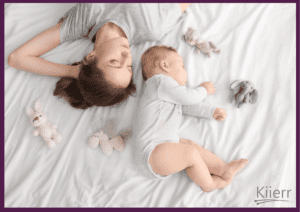
Though sleep may seem impossible in the months following the arrival of your baby, it’s important that you prioritize it as much as possible. As the general wisdom goes, be sure to sleep when your baby sleeps. This will reduce your stress levels and give your body the energy it needs to perform bodily functions with ease. (This includes regrowing hair.)
Fight Hair Loss With the Kiierr Laser Cap System
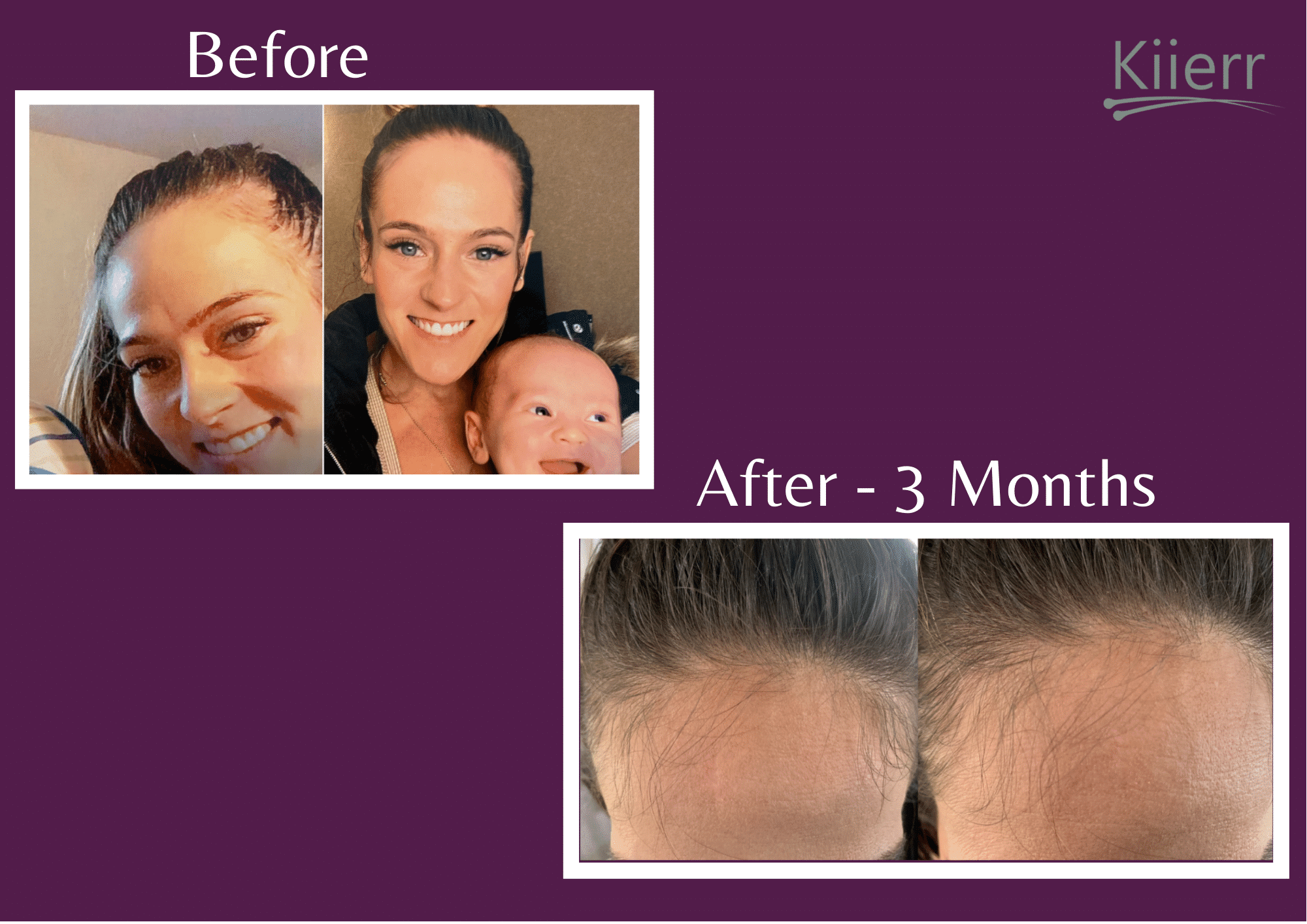
Want to grow thicker and fuller hair without any effort, pain, or inconvenience? The Kiierr laser cap system is so simple that you can do it while breastfeeding, watching TV, or even rocking your newborn baby. It’s FDA-approved and boasts an impressive 93 percent success rate in clinical studies.
There are two different Kiierr laser cap options: the 148 Pro and the 272 Premier. If you’re on a budget and are willing to perform a few more treatments to see results, the Kiierr148Pro is a great option. But if you’re looking for a faster solution, the Kiierr27Premier boasts double the lasers, faster output, and quicker results.
Regardless of which option you choose, the Kiierr laser cap system is a no-brainer. Not only will it help slow the rate of hair loss, but it’ll also encourage your hair to grow back at a faster rate.
Begin an in-home treatment plan today and notice the difference for yourself!

